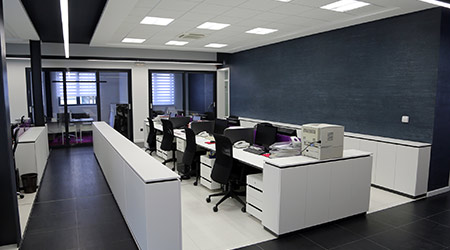LEED v4 and Why Raising the Bar Matters
Building upon past success, the green building movement must respond to environmental realities
Very few people within the architecture, real estate, or construction industries could have predicted how quickly LEED and the green building movement would advance following LEED’s launch 15 years ago. Today, this groundbreaking green building rating system has not only succeeded in fully establishing itself within the commercial real estate market, but also LEED-certified buildings have come to set the standard in places like New York, Boston, Washington, D.C., Chicago, Houston, Hong Kong, Amsterdam, Los Angeles, and Beijing. LEED has gone global and it has taken its underlying values along with it.
When the LEED rating systems for existing buildings were first introduced, providing incentives for property managers to develop actionable strategies aimed at limiting a building’s environmental impact was a significant accomplishment. It represented a radical change in the way that most people thought about buildings at that time. The greatest testament to the success of the movement is that, less than 20 years later, we can say that simply designing a thoughtful sustainability strategy is not leadership anymore — leadership today has to be about results.
The environmental crises that we are collectively facing have also grown in number, scale, and magnitude, and expectations of what is possible and what is necessary within the built environment have had to evolve to reflect these new realities. The pace of climate change has exceeded our earliest predictive models, and many climate scientists argue that we are already running up against the outer limit of greenhouse gas emissions that we can safely deliver into the atmosphere without facing catastrophic consequences. Our oceans are acidifying, our planet’s biodiversity is under existential threat, and rapid deforestation is destroying eco-systems at an exponential rate. The green building movement has to be responsive to these realities.
The U. S. Green Building Council (USGBC) estimates that if the 1 billion square feet of commercial construction starts that occurred around market peak in 2007 was made up entirely of net zero energy buildings, this would amount to a mere 1 percent reduction in energy use from our collective existing building stock. Clearly, raising the bar in this all-important sector matters. LEED v4’s restructuring of the Operation and Maintenance rating system within the area of performance measurement is a crucial dimension of USGBC’s effort to respond to environmental realities. The introduction of LEED v4 brought with it an increase in the minimum Energy Star score needed to achieve certification from 69 to 75. For projects that cannot meet this new requirement, there is an alternative in the form of an option that allows projects to demonstrate 20 percent reduction in energy over a 12-month period.
Performance measurement via continuous metering is another major focus area within LEED v4. New prerequisites mandating metering in all LEED-certified existing buildings reinforce the need to incorporate performance data in ongoing building operations decision-making. Raising the bar in these ways with LEED does mean that some buildings will have to work harder to become certified or to recertify under LEED v4 than these same buildings would have had to under LEED 2009. But these changes will also ensure that building owners and building tenants will have better-performing buildings.
These types of changes are essential for LEED and the green building movement because they help to ensure that our legitimacy remains intact, and this is essential for USGBC to continue making advances in varied real estate markets across the world. Building owners, tenants, and the general public need to feel confident that LEED-certified buildings work and that they work very well to maintain high rates of market adoption. The increased rigor and comprehensiveness introduced by LEED v4 to the broader green building market place is a sign that our industry is advancing quickly out of its adolescence. USGBC is using its position as a leading international voice in the green economy to ensure that our movement is delivering upon its promises of creating a more sustainable world.
For more information on LEED v4 for building operations and maintenance, please visit, www.usgbc.org/leed
Related Topics:















